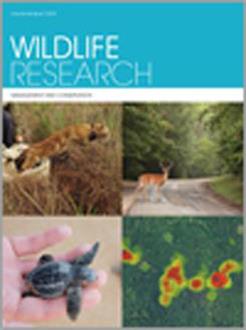Context. Projecting the population trajectory of endangered species using models requires conservation practitioners to evaluate how variations in life history parameters may change a population’s viability. This is particularly important for species that occur as fragmented populations and whose densities are naturally low. Simulations may be used to identify conservation actions that have a higher likelihood of reducing a species’ extinction risk.
Aims. The aim was to apply population viability models to the northern quoll (Dasyurus hallucatus) under alternative scenarios.
Methods. The current (baseline) northern quoll demographic trajectories were evaluated using field-collected data derived from monitoring programs. The impact of alternative scenarios of mortality (for example, due to increased predation by introduced predators) and population supplementation (either from populations elsewhere or from captive breeding) on the viability of a northern quoll population was then determined.
Key results. Under current conditions, individual Pilbara populations of northern quoll are projected to persist for over 20 years. However, these populations are sensitive to extinction events. Population growth rate and local extinction risk were most sensitive to changes in juvenile mortality as low as 5% per annum. Increased mortality of the juvenile age cohort above current levels resulted in a projected decline in population size of 22–54%, with a moderate-to-high chance (20–96%) of local extinction within 20 years. Supplementing the population produced a moderate increase in quoll persistence over this time period.
Conclusions. Populations of northern quolls in the Pilbara, and potentially elsewhere in their range, are highly sensitive to even small perturbations in juvenile mortality rates. The continued persistence of quoll populations in fragmented refuges is characteristic of a species that functions as a dynamic metapopulation in the face of high environmental perturbations.
Implications. Increased juvenile mortality above current levels – for example through the spread of cane toads or invasion of feral cats – may have serious implications for the persistence of the current network of northern quoll populations and other mammals that exhibit population fragmentation in arid environments. Estimates of survival rates for the juvenile cohort of quolls would improve diagnosis of a species’ population dynamics as well as inform practitioners of key life-history sensitivities.






